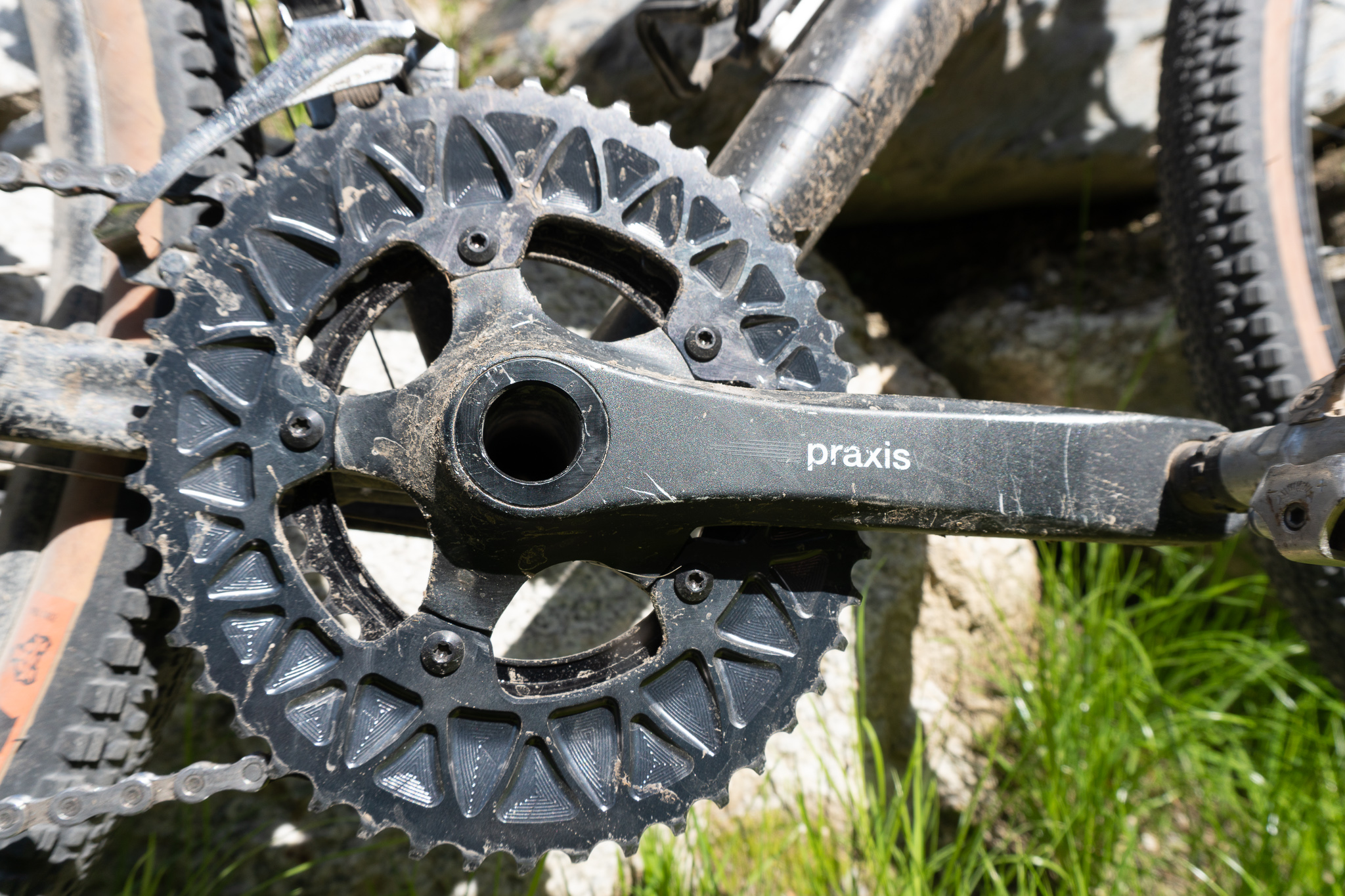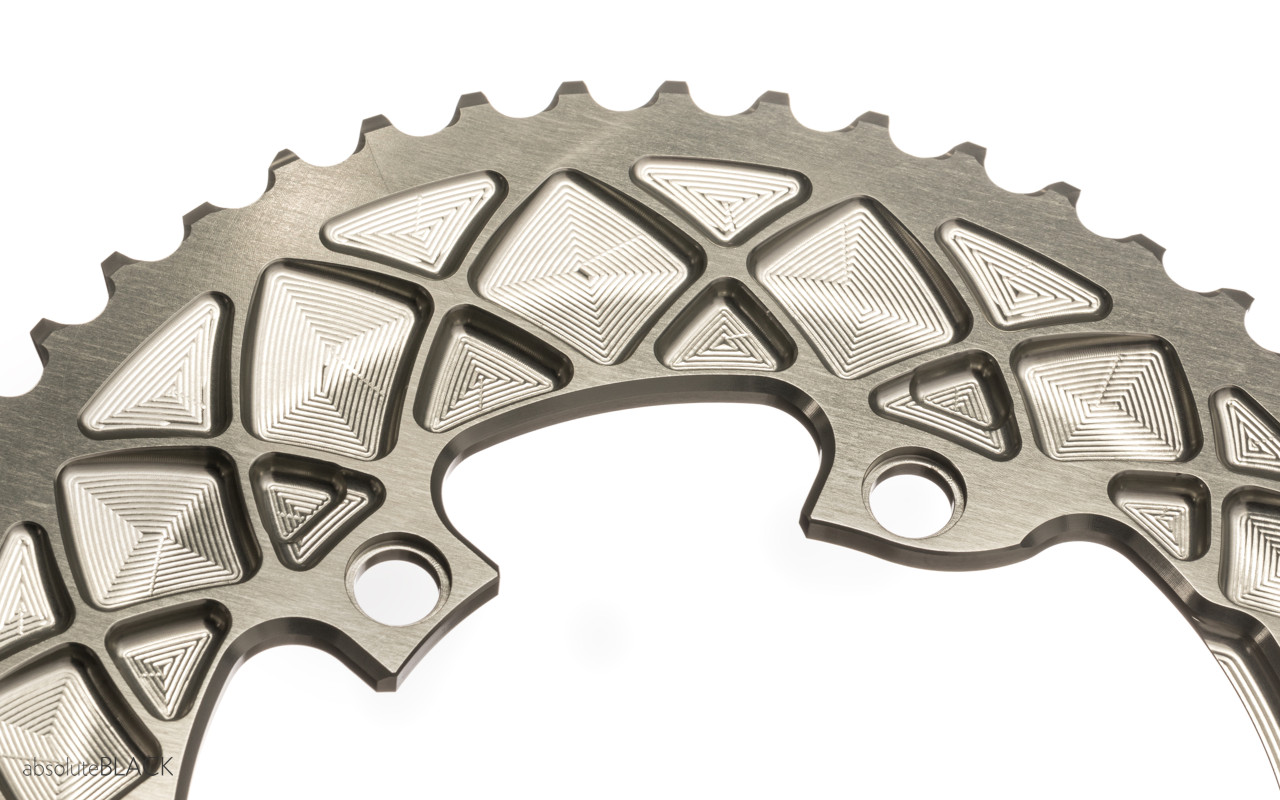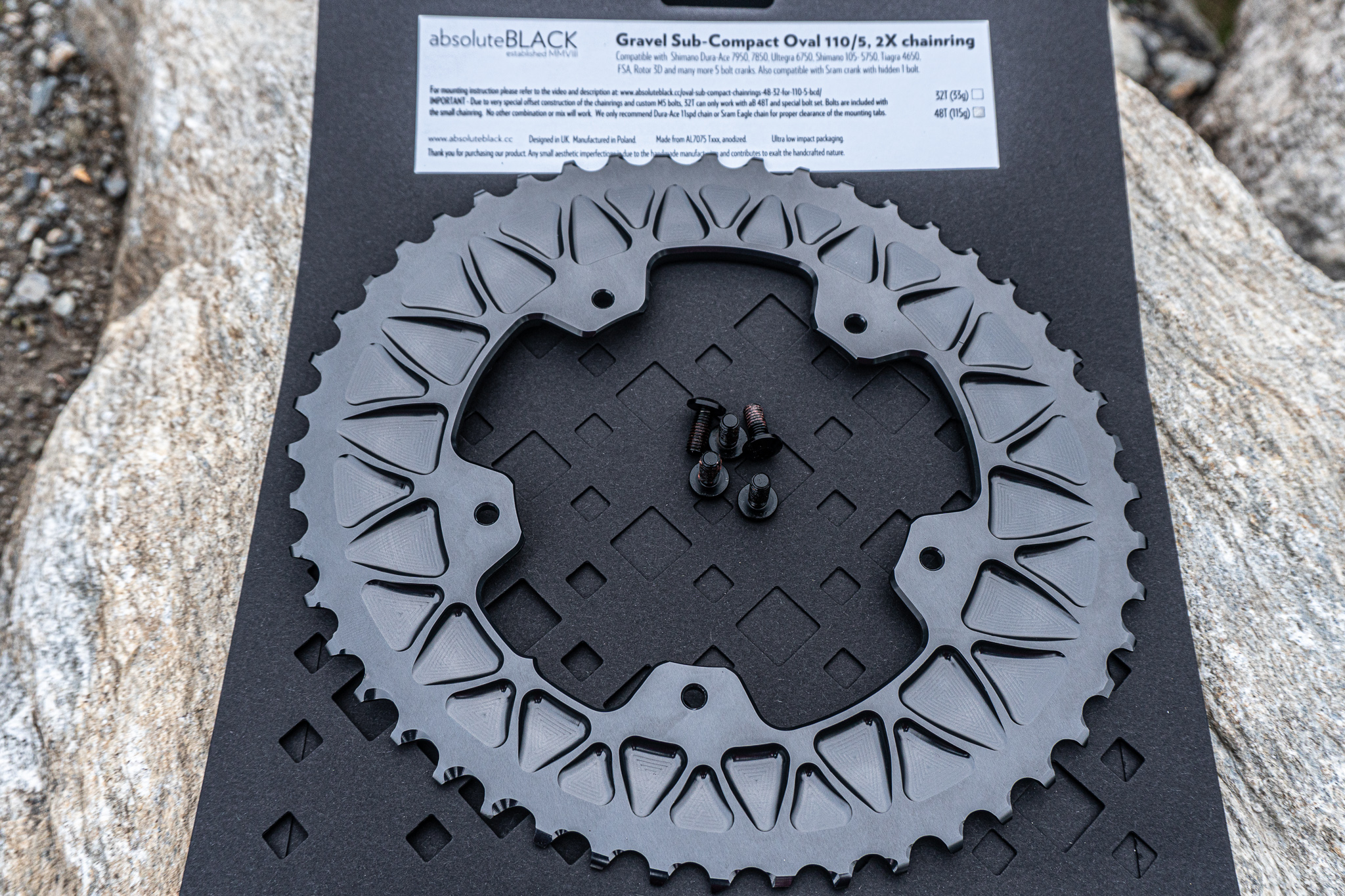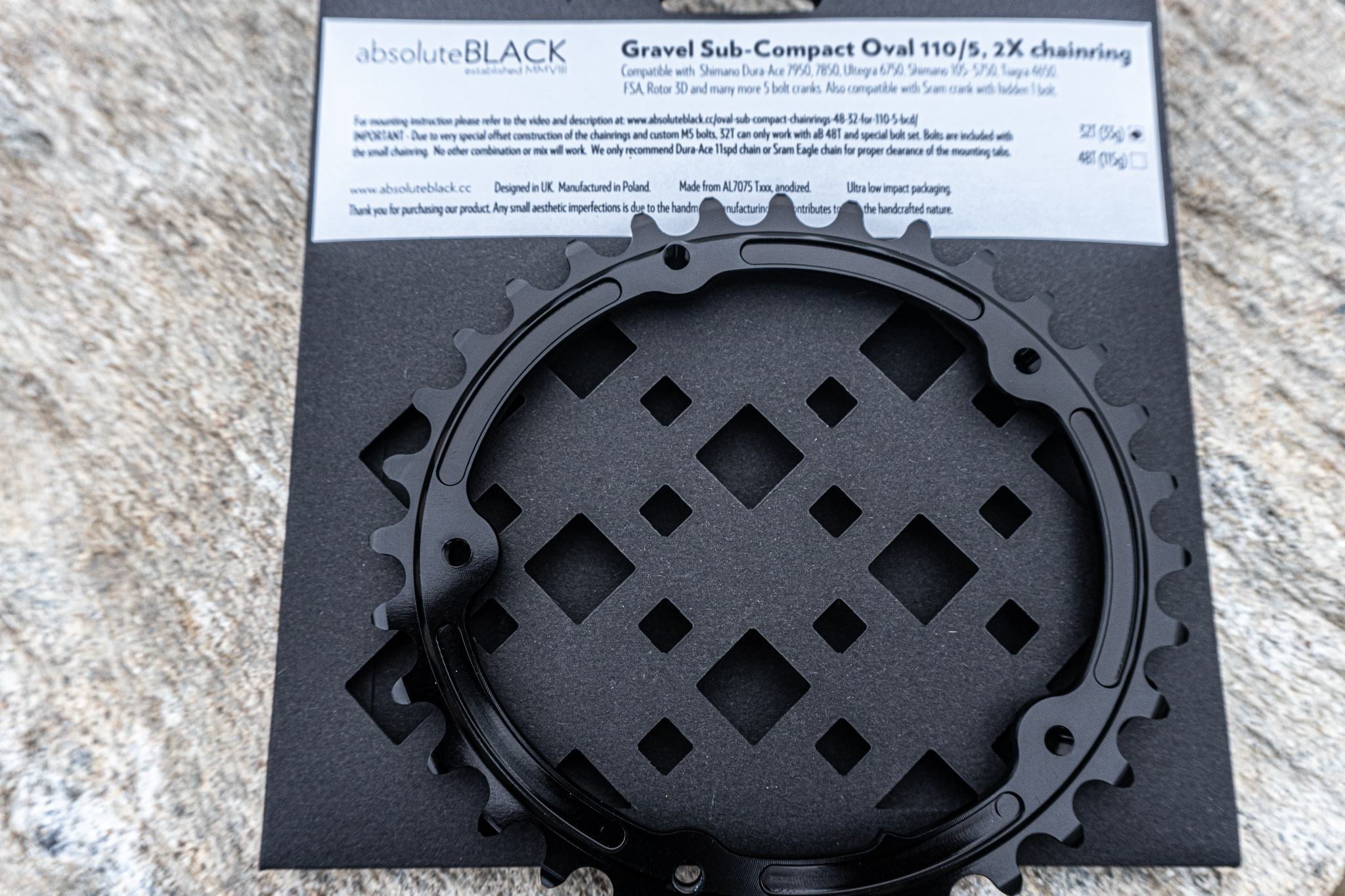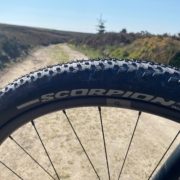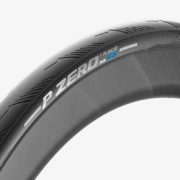Absolute Black Chainrings: Scott Cornish
Absolute Black are absolutely fabulous at making great chainrings; it’s about time that we took a look at them then …
Some riders swear by them, others aren’t so convinced. Oval chainrings can be a bit marmite, but are certainly here to stay, with Absolute Black dedicated to the cause. As a physio and bike fitter, the explained science behind the advantages of oval rings makes sense as a means to increase pedalling efficiency, but the proof is in the riding. I have been putting in some hefty km on a set of Absolute Black’s sub-compact rings, installing their 32/48 combination on a Praxis Alba chainset as a gravel oriented set up.
Due to Praxis’ proprietary design to have a 32 chainring fit into a 110pcd, there isn’t a choice of ratios for this chainset, so Absolute Blacks’s 30/46 combo won’t fit. The specific sizes are designed to work intimately together, with tooth shape and position optimised for maximising shifting performance.
The chainrings vary slightly in their % ovalisation. It is subtle, but this is said to optimize efficiency for each ring due to the generally different pedalling torque through each ring, i.e. flat to rolling terrain for the big ring, inner for more sustained climbing or steeper inclines.
Unpackaged, the rings feel light, yet solid, like they would be unwaveringly stiff under some powerful legs. As with the original Praxis chainrings, these have the thread within the inner ring, the outer bolts directly the inner. Bolts are provided being a proprietary size with the thoughtful feature of having threads coated in a loctite compound. Installation is straight forward, a tiny peak on each ring indicating orientation under the crank arm. The only technical part is rearranging the front derailleur, moving it up to clear the ring’s high point. Full instructions can be found on the website here. Chain length stays the same and I used an 11spd Shimano 105 with quicklink which worked just fine.
Adaptation
Fitted and eager to get out, living in the Alps, both inner and outer rings get full use on every ride. Those first few km along flat terrain did feel awkward, pedaling felt lumpy as each foot came over the top of the pedal stroke. Expecting a performance increase, it felt odd initially, almost as though more effort was required over familiar valley terrain and local hill climbs for a given speed. Overly expectant of an immediate positive outcome, I had to remember that years of teaching yourself to ride in a particular way, to pedal in efficient circles overcoming the upper and lower dead spots, had to be unlearnt. Riding oval means learning a new movement pattern, which, like learning any other skill, takes perseverance and time before it feels normal. This adaptation period will be different for everyone. I had over 25 years of riding round rings in the legs and am of a ‘certain’ age. Younger and relatively new riders may find their adaptation experience is faster. Personally, it was around 15 hours before pedaling felt smooth and relaxed, eliminating the deliberate effort of pedaling through the 2 dead spots. The oval rings now felt ‘round’, although, overall, I have felt that the gains from riding oval have become more apparent over the course of months rather than simply from the point where they felt smooth to ride.
Shifting performance did take a while to dial in, setting the bottom of the cage about 3mm from the peak of outer ring. Once that sweet spot was set, shifting was on a par with the round rings they replaced, although I didn’t test this in a race situation.
Just as an experiment, I returned to the round rings for a couple of weeks, riding the same routes. Adapting back (smooth pedal stroke) was significantly quicker, within a 3 hour ride. 25 years of an ingrained movement pattern will always linger, so it didn’t surprise me, although I did feel that something was missing with the pedal stroke, added drive during the most powerful section of the pedal stroke, 12 to 3 o’clock.
As the legs became adapted, there was a sensation of being to turn through the gear a little quicker and more efficiently, a subtle, but positive difference in how I rode. On long climbs, there was an enhanced ability to maintain a strong cadence. Where the gradient ramped up and cadence plummeted, turning over the gear felt a little easier than before.
As alluded to, we all differ biomechanically and how we interact with our bikes. Adaptation and overall outcome will vary from rider to rider. The micro adjusters will normally notice the greatest positive effect with the macro adjusters most likely noticing the least, but it is there. I sit in the former group and with that, I did notice the difference in oval shape between the inner and outer rings, especially transitioning to the inner ring at the start of a lengthy climb from riding flat or rolling terrain, where cadence had been lower. It took a few minutes for pedalling to feel smooth on the different shape as I ascended. This is very much a personal experience and may be different for everyone else. Additionally, I found moving the saddle forward by 12mm over my position with round rings seemed to enhance the oval ring’s effectiveness.
In terms of actual research, it is limited and it’s important to take into account the allowed adaptation period prior to the testing. The authors’ comments in addition to the actual results are also interesting as there are numerous variables, such as with this article. This article about long term adaptation in a 1 year follow up with subjects suggests that true adaptation to gain the most from oval rings takes much longer than a couple of weeks. This article is an extensive read, quantifying in significant depth the effects of oval chainrings and summarises many previous studies.
The claimed performance advantages do seem to strongly ring true, certainly over the longer haul and especially on long climbs (long being relative depending on your location of course). A main benefit was demonstrated on steeper inclines, especially off road where cadence can drop significantly over technical terrain, helping to maintain forward momentum. Of course, the ‘problem’ with finding a product which enhances your cycling experience and/or performance, is that it can be a costly exercise if you have n+1 bikes, installing said product on each one. Although not low cost, Absolute Black’s pricing does make the change at least accessible. You do have to allow for that adaptation period though, with true adaptation taking longer. Don’t expect immediate results on that first ride, riding may even feel harder. Do take the time to set up the front derailleur properly to ensure accurate shifting as well, then you’re set. Personally, I am a convert.

